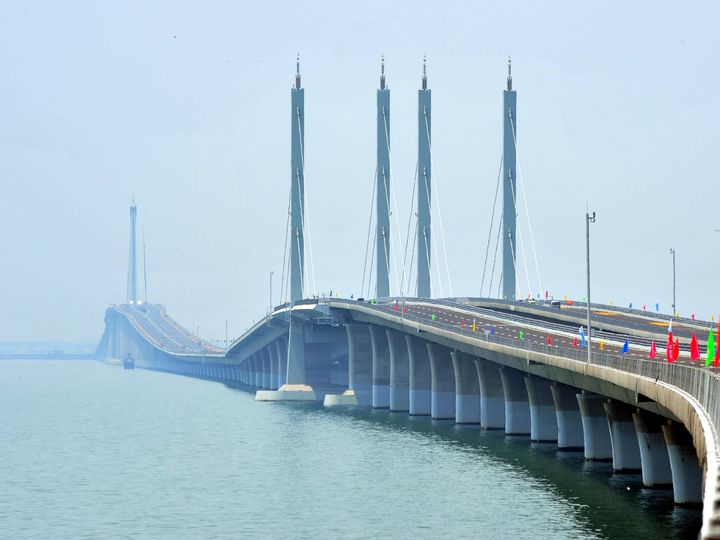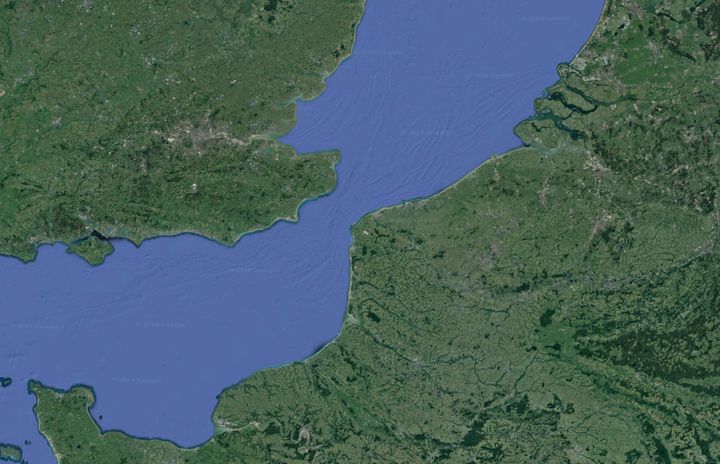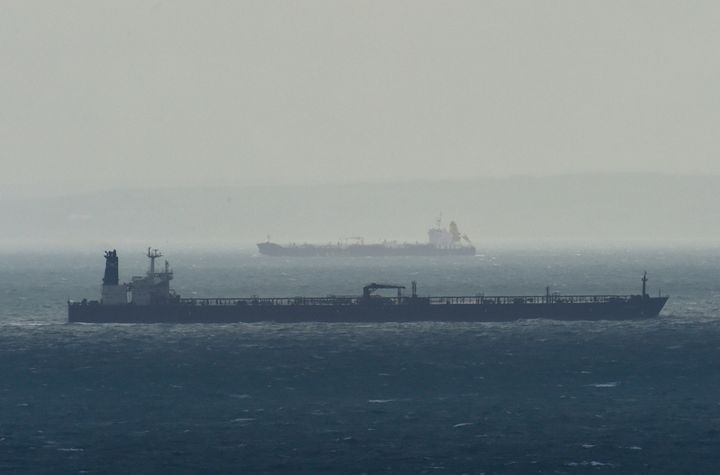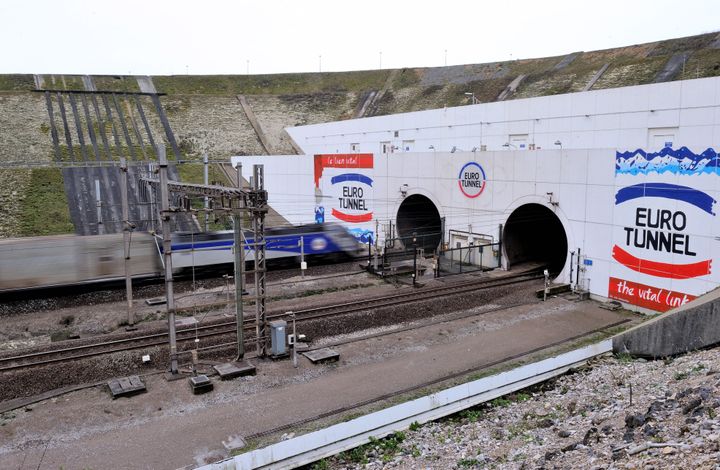Why are we talking about bridges?
His ideas were apparently raised during a summit between Theresa May and French President Emmanuel Macron at the Sandhurst Military Academy.
As if to confirm this, the Foreign Secretary then tweeted about the importance of creating “good connections” with our neighbour, asking if the Channel Tunnel was just the “first step”.
According to Sky News, Johnson said: “It’s crazy that two of the biggest economies in the world are connected by one railway line when they are only 20 miles apart.”
Is it possible to build a bridge over the English Channel?
Technically, yes.
For context, the world’s longest bridge over open water is the Jiaozhou Bay bridge in China. Spanning an impressive 26.4 miles it could easily cover the 21 miles it would take to cross the English Channel.
While they of course have very different engineering requirements it demonstrates that at least in theory, it is possible to build large, long-distance bridges over the sea.
The bridge took just four years to build and sits on 5,200 pillars with various heightened sections using suspension pillars to allow shipping traffic to pass underneath it.

Dr Kostas Tsavdaridis, Associate Professor in Structural Engineering at the University of Leeds points out that both Southern England and Northern France are not seismically active, making the design and viability of such bridges slightly easier.
Has anyone tried to build a bridge over the Channel before?
Yes, in fact before the Channel Tunnel was even signed off an engineering group called LinktoEurope proposed the idea of a vast suspension bridge connecting the two countries.
Citing the idea of tunnelling under the Channel as “impractical”, the proposal was made in April 1981 and described a three-lane motorway running from Dover to Calais. The estimated cost of the project (at the time) was around £3bn.
The bridge, which would sit some 220ft above the Channel would have rested on huge pylons and would, the engineers said at the time, have survived a direct hit from any shipping. It’s not clear how seriously the government considered this but as we know it eventually signed off on the Channel Tunnel project which opened in 1994.

How much would it cost?
That’s almost impossible to say, however if we look at the rough cost of the world’s largest bridges we can get a rough ballpark figure.
The Jiaozhou Bay bridge cost China around £1.42bn, while the second longest bridge over water the Lake Pontchartrain Causeway cost just $43 million when it was built in 1956 (around $416m in today’s money).
Both projects, while incredibly impressive, are located over completely different stretches of water. A bridge over the Channel would need to factor in not only spaces for shipping, but also the turbulent weather conditions that so notoriously plague the stretch of water.
With that in mind, it’s probably fair to say that the cost would almost certainly be more around the original LinktoEurope proposal of £3bn. In fact probably much higher.

How would boats pass through?
The English Channel is the busiest shipping lane in the world with around 500 vessels trying to safely pass through it every single day.
With so much shipping passing through, keeping things moving is already a logistical nightmare. State-of-the-art satellite systems monitor all vessels over 300 tonnes.
Building a bridge would, unsurprisingly complicate matters with this vast traffic being forced into even smaller lanes where they could safely pass under the bridge. It’s also worth noting that some of the world’s largest vessels pass through the Channel making the minimum height requirements for the bridge already quite substantial.
It’s not impossible though, and with companies like Rolls Royce already developing the first generation of self-driving ships, automated shipping lanes could reduce the safety concerns around human error.

Finally, what about the Channel Tunnel?
You might argue that the Channel Tunnel is in fact proof we already have a solution to a direct link between the UK and France.
Up to 400 trains travel through the tunnel every single day carrying an average of 50,000 passengers, 6,000 cars, 180 coaches and around 54,000 tonnes of freight.
While some might use this as evidence that we should just build more tunnels it should be noted that the Channel Tunnel cost £4.65bn, took six years to build and only just started making a profit in 2012.

